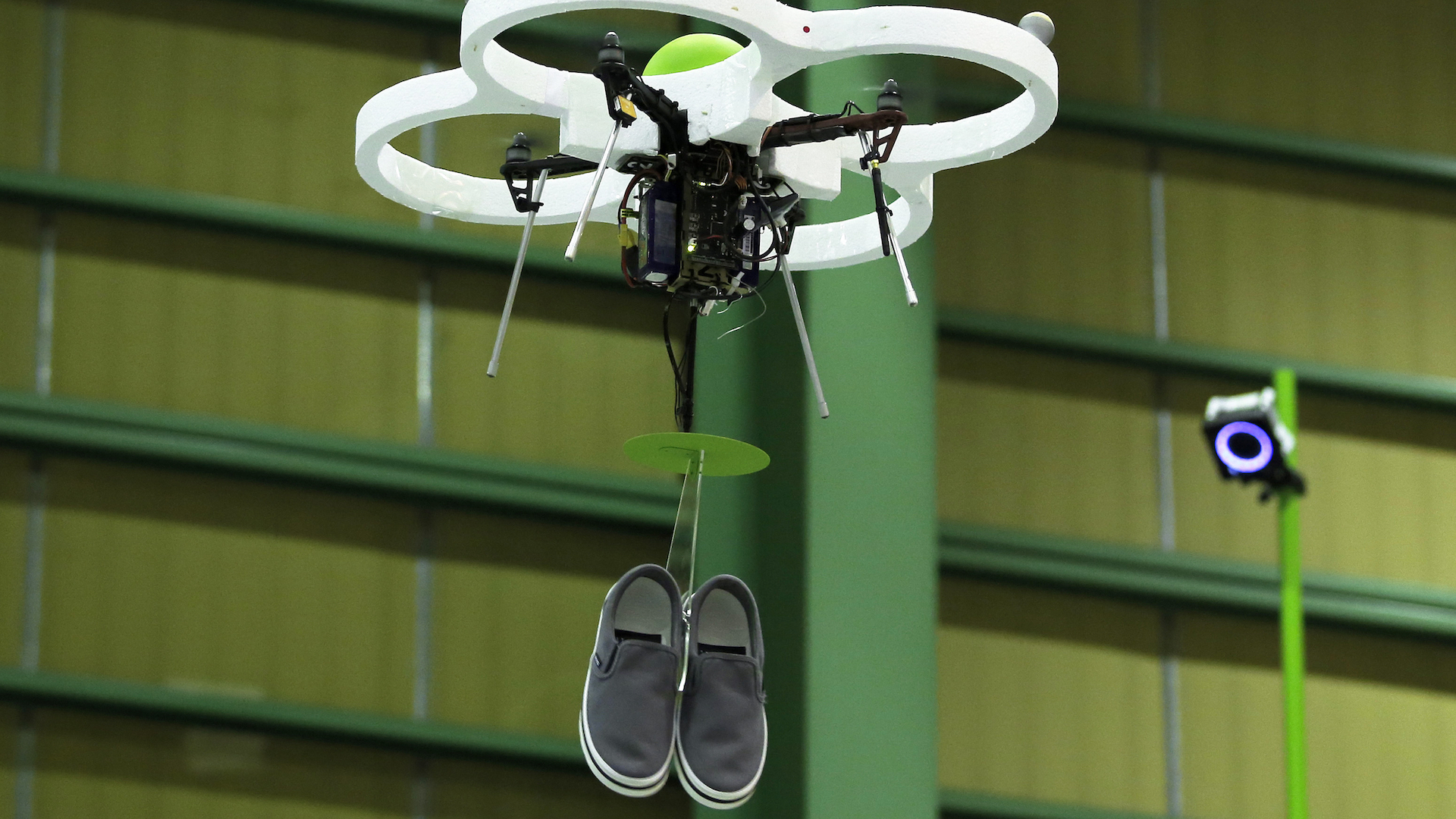

While many of us are eager to have unmanned aerial vehicles replace the current standard, truck-based delivery system, Christopher Hewlett of PwC Drone Powered Solutions is urging us to curb our enthusiasm. Having served in the US Navy for 21 years, with one of his last assignments having him lead a drone-integration unit, Hewlett may have some perspective in this regard that we’d be wise to consider.
In a conversation with Forbes, Hewlett’s ultimate point is concise and rational: drones will not be replacing our current delivery methods consisting of planes, trains, trucks and last-mile van deliveries—they will merely aid them, supplement them, and make the entire process more efficient. The old and the new will work in tandem, to find the most effective symbiosis. In a way, we’ve already seen Amazon patent a few things that allude to this potential short-term outcome, in which drones take advantage of the current infrastructure. One need only to look at the train-mounted drone hubs, for example, to understand how drones can assist, not replace traditional delivery methods.
“Here’s what I learned in my work with the Navy: As with the Navy’s drone program, the overall drone market in the US will supplement manned operations rather than supplant them,” Hewlett claimed. However, the number of packages that could benefit from drone delivery is exceedingly high. According to Hewlett, “drones represent a simple transport mechanism that can carry up to five pounds. Coincidentally, 86% of Amazon’s packages weigh five pounds or less.”
Hewlett is adamant, however, that there are still unavoidable obstacles to surpass before drone deliveries are standardized. “For drones to become a viable commercial delivery mechanism, three essential factors need to coalesce. The first is safety. Drones need to operate safely outside commuter air space while also routinely navigating tall buildings. Collision avoidance and air-space management are critical,” he says.
We’ve reported on various entities working on this exact factor for quite some time now, with Project Wing refining an air-traffic management system, to New York opening its first drone-testing corridor to sort out related issues, and researchers developing technology for one operator to manage hundreds of drones at a time. Obstacle avoidance and parallel drone operation are key factors that most giant entities in the drone industry are most certainly focusing on before things really take off.
While Hewlett never specifically mentions which factors comprise his three unavoidable hurdles toward drone integration, it’s safe to say that the other two are public acceptance and corporate confidence. Regarding the former, Hewlett says that consumers “want something familiar. Recognizable. Drones aren’t there yet. They will be – in time. But first, we need to have the infrastructure in place.”
As for the steadfast determination on behalf of corporations pushing the idea of drone deliveries toward reality, Hewlett maintains that package delivery currently barely adds to PwC’s global market estimate of commercial drone applications—which, by the way, is reportedly at $127 billion and mostly comprised of agriculture, photography, entertainment, infrastructure inspection, etc. If package delivery via drone is to become an actual chunk of that global market estimate, corporations need to put their money where their proverbial mouths are.
“We still need a robust transportation network for more widespread commercial drone delivery,” Hewlett says. “The question is: Which companies are willing to make that investment?”
Essentially, don’t bet on doing your Christmas shopping from your phone while lounging in the backyard and having drones deliver the gifts on the lawn next to you just yet. You may still need to wait for that UPS truck, or go to an actual mall. The good news, however, is that there’s an incredible amount of money behind resolving the current issues preventing that scenario from becoming a reality. The financial incentive, alongside the inherent competition in getting there first, is likely to get us there sooner rather than later—just not quite yet.